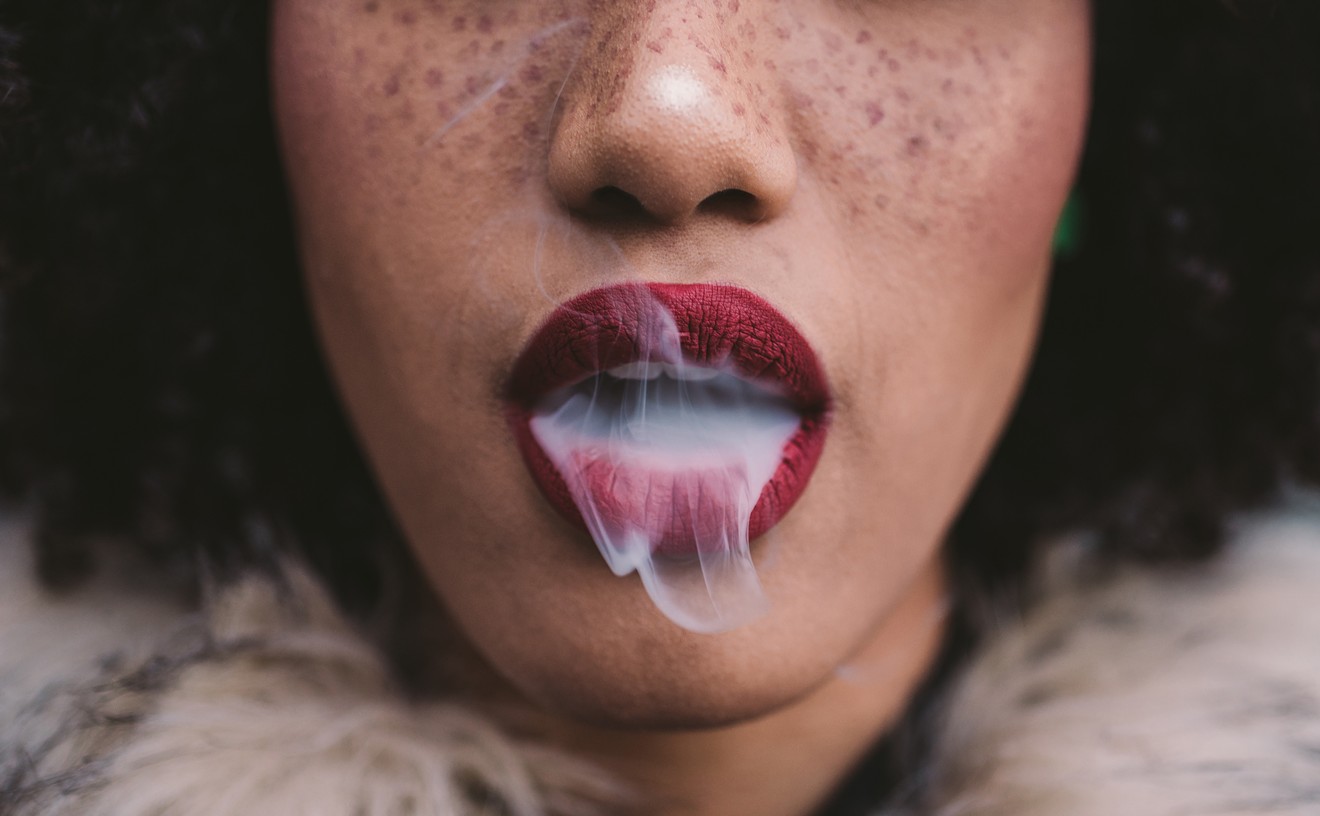Linda Dee Guy is a printmaker, a collagist, a painter. But she's more than that. She's a historian too. She's a visionary. And she's a scientist.
Guy's work is full of patterns: ones she has created, ones she's found, ones she has manipulated, repeated, and made into something wholly new. Her current show at RO2 Art in Uptown is titled Re-Orient.
The title refers to reorienting patterns and shapes. But it's also a commentary on the many patterns and objects that have been called "Oriental" when in reality they were Indian or Chinese or even European. So, she takes the patterns and re-orients or, really, un-orientalizes, them.
Bubbles and leaves float through her work, as mandalas and cogs turn. Guy crafts a pattern--or finds a pattern that inspires her--and an installation is born. Her methods include Inkjet printing on fabric, silk screening, painting, and drawing. But the works are not simply "pieces." They're installations.
She installs the works based on the space where they are to be shown. Some of the parts have an adhesive: so that they could be pressed on anywhere.
Guy knows her way around prints and patterns. She has been teaching printmaking for thirty-five years at TCU, and is the head of program there. "She's always ahead of what's going on with printmaking," Jordan Roth, co-owner of the gallery explains. "Instead of fighting technology she embraces it."
Guy's work is as much about that technology as it is about "product." She is interested, of course, in what she ultimately creates. But she is equally interested in how she gets there.
"Reorient No. 2" began with a Persian rug that you can still see in the piece. "But she's created her own funky, contemporary take on paisley," Roth explains. She also uses images of radiolarian (microscopic, single-celled plankton) drawn in 1862 by Earnest Haeckel. Why? Because she is fascinated by them and that is always where the generating begins for Guy.
The result looks like something from chemistry class, different elements pulsing through the space.
"Reorient No. 6" began with a lithograph of what are called "Indian tiles." The image is covered in massive quantities of resin (with not a bubble in sight), and on top of it are paisleys, swirls of paint, and numbered circles that looks like like slices of an orange, (making the work 3-dimensional).
Aesthetically, the piece is, quite simply, beautiful. Truly, truly beautiful. Not what you might expect with those parts making up the sum. But that is Guy's gift.
"Reorient No. 7" looks like an Indian temple. It calls to mind an ancient design. But it isn't. It's purely Guy's creation and that's exactly the point. Guy has reoriented designs in order to call into question the origins of all patterns as well as our use and definitions of them.
She's saying that these things are but also that they aren't.
Guy is also showing her system series in which she created system rules and then created by them so as to reenact what could be natural processes. The result looks like biological systems. They also call to mind spirograph pieces and (in some) the female reproductive system. It was not her intention. But perhaps should not be a surprise really. It is the ultimate system of generation.
Her processes and her product are circular and repetitious and system based. They are natural but they are mechanical as well.
It's tapestry and biology. It's art and science. It's history and truth and reimagination. If Guy wasn't a fine artist, which she most definitely is, you can easily imagine her working on a Tim Burton film or being an imagineer at Disney. She did actually animate her work for a video at one point, and says that childhood experiences did leave her living amongst "exciting fictions" and often calling into questions "the nature of reality."
In essence, Guy uses patterns as language. It's the language of art, but also the language of science. It's an un-packaging of what has become accepted knowledge and re-orienting what we think we know is true in order to discover a new truth. In a post-apocalyptic world, aliens might find this work and take it to be our science books. The thing is, they wouldn't be entirely wrong.
Prepare to spend time at RO2 Art when you go to see Guy's show. Even though you won't be asked what the re-orientations mean, you will find yourself longing to figure them out just the same.
But this exhibit is purely about the quest. Our quest. The human quest to learn and to know and to pattern all that we discover into understanding.
Through October 22nd. (Although some pieces will remain during the group show that follows Re-Orient.










